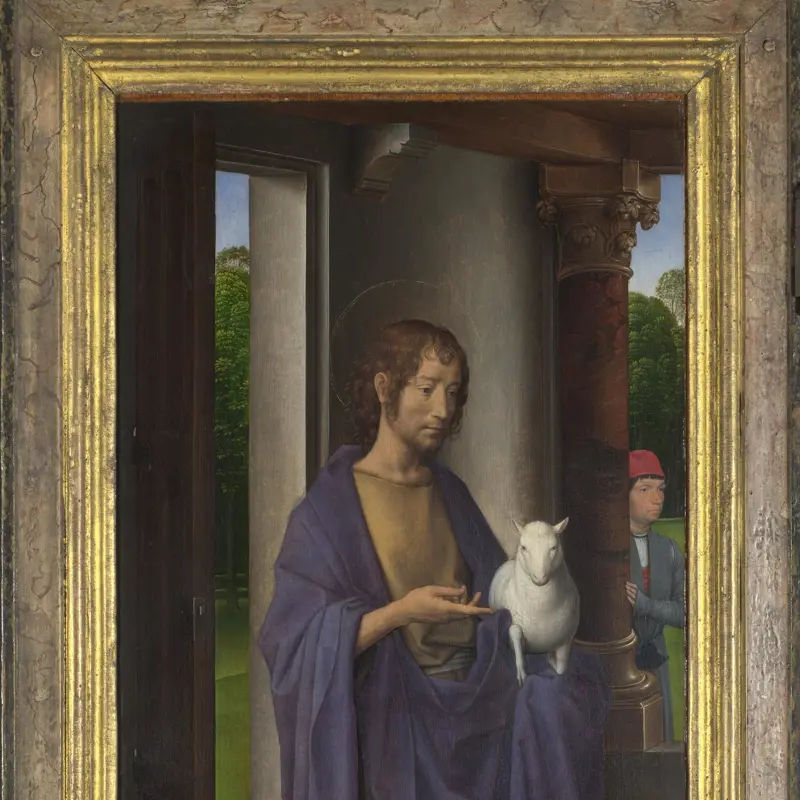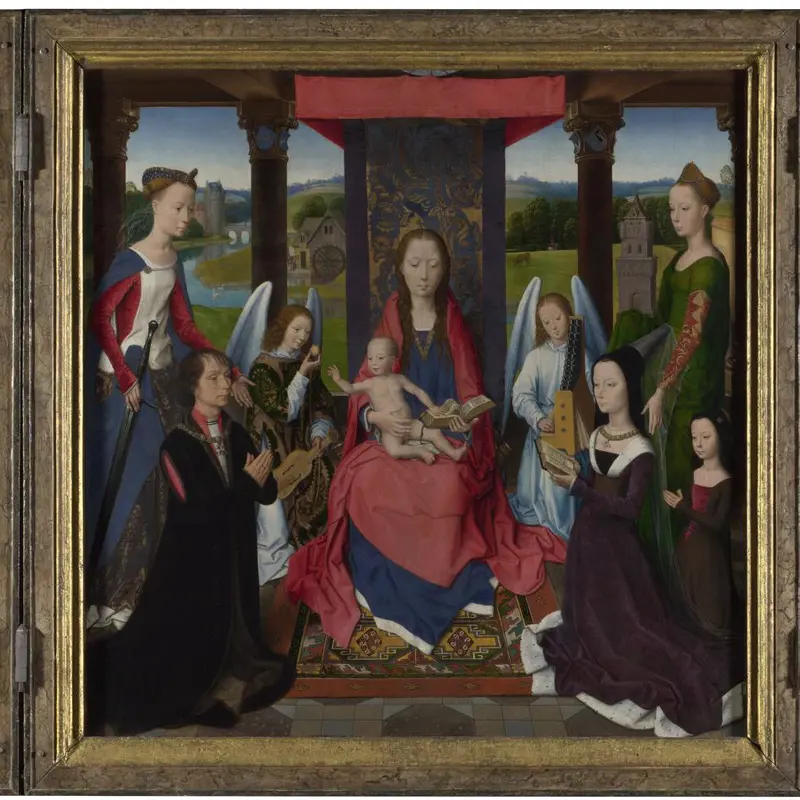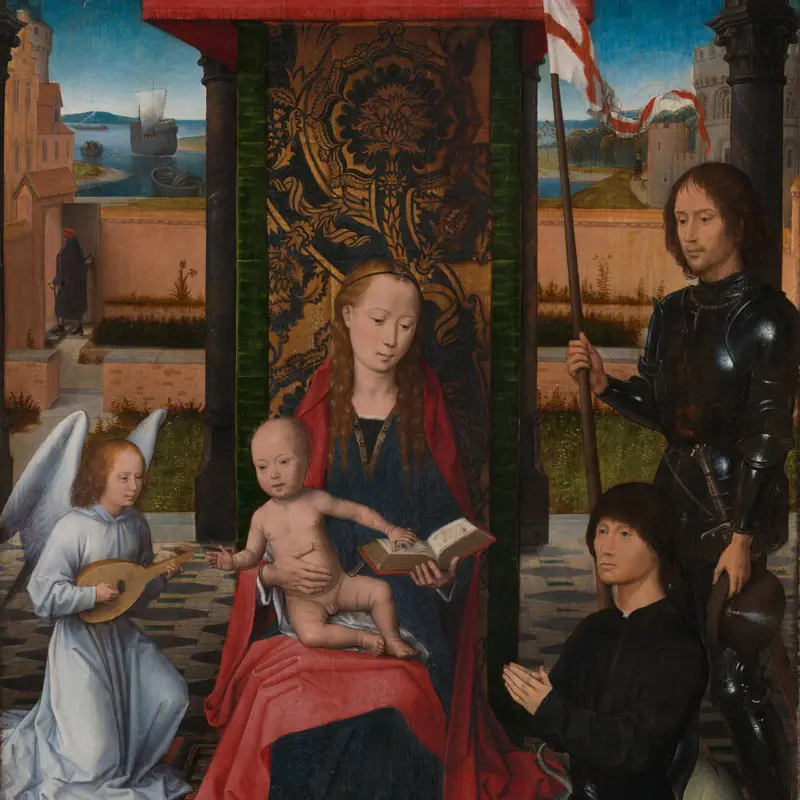Hans Memling is recorded as a citizen in Bruges in 1465 and was the leading artist there for the rest of his life. His work is strongly influenced by Rogier van der Weyden. Memling became especially popular in the 19th century and his art is well represented in the National Gallery.
Memling was born in Germany, at Seligenstadt near Aschaffenburg, and probably spent his early life in Mainz. By 1465 he had moved to Bruges, where he was evidently successful. By 1480 he had bought himself a large stone house, was taking on pupils, and had joined a confraternity.
Early in his career Memling made an altarpiece for the Florentine businessman Angelo Tani. En route to Italy in 1473 this was seized by pirates and is today in Danzig. Other paintings of his appear to have been made for Italian patrons.
Hans Memling
active 1465, died 1494
Works by Hans Memling
(Showing 6 of 10 works)
A pale young man, hands folded in prayer, is engaged in private devotions. This small painting was clearly the left wing of a diptych (a painting made of two parts) or triptych (a painting made of three parts). The object of his prayer would have been shown to his right, on a panel attached to t...
Saint John the Baptist stands in a kind of loggia (an open-sided gallery or room) with a tiled floor, wearing a hair shirt and holding his emblem, the lamb. This is the left wing of The Donne Triptych, painted by Hans Memling for the Welsh nobleman and diplomat Sir John Donne, probably in the lat...
Saint John the Baptist, dressed in a hair shirt and a purple mantle, holds his attribute of a lamb. This refined painting was originally the left wing of a small triptych (an image made up of three parts). The central panel, which shows the Virgin and Child, is now in the Uffizi, Florence while t...
Saint John the Evangelist holds a chalice from which a serpent escapes. He appears on the inside of the left shutter of a small triptych (a painting in three parts), the central panel and other wing of which are also in the National Gallery’s collection. They were painted for the Welsh nobleman a...
Saint Lawrence is dressed as a deacon and holds a book and the grill on which he was martyred. This panel was part of a small triptych (a painting in three parts) made around 1480 for Benedetto Pagagnotti of Florence. The central panel shows the Virgin and Child and is now in the Uffizi, Florence...
Courtier and soldier Sir John Donne kneels before the Virgin and Christ Child in the central panel of this triptych (a painting in three parts), which he commissioned, facing his wife Elizabeth and one of their daughters. With them are Saints Catherine and Barbara, two of the most popular medieva...
This is the central panel of a small triptych (a painting in three parts), probably commissioned by Sir John Donne in the late 1470s. In it, he kneels before the Virgin and Christ Child, facing his wife Elizabeth and one of their daughters. They are accompanied by their patron saints Catherine an...
The Virgin Mary and Christ Child are enthroned beneath a canopy and before a cloth of honour of the kind displayed behind medieval kings and queens.The naked child is balanced on her knee and crumples the pages of an open book. The unidentified donor kneels on the right: he was presumably called...
Not on display
These panels were once the wings of a small triptych (a painting in three parts), the centre panel of which – The Virgin and Child with Two Angels – is now in the Uffizi, Florence. The altarpiece was demonstrably in Florence by the end of the fifteenth century, as its landscape backgrounds were f...
The Virgin Mary, bareheaded and richly dressed, holds the naked Christ Child, who rests on a white cushion on a ledge. We are not sure whether the painting was once part of a triptych (a painting made up of three sections) or stood alone. The infant Christ could be blessing a donor in a panel on...
You've viewed 6 of 10 works










